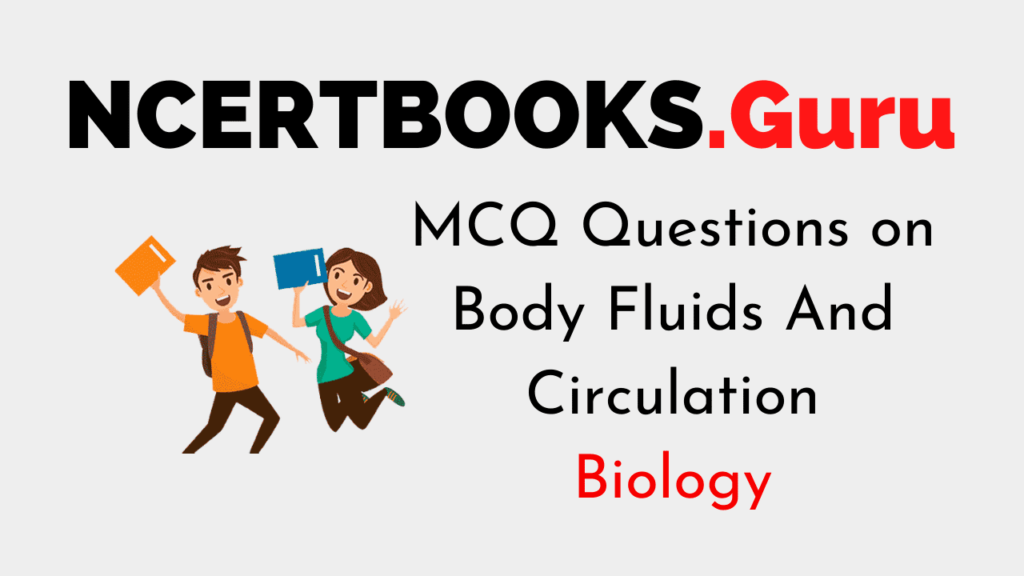MCQ Questions on Body Fluids And Circulation
1. The normal diastolic blood pressure in a normal healthy adult human is
(a) 80 mm Hg
(b) 60 mm Hg
(c) 90 mm Hg
(d) 110 mm Hg
Answer
Answer: (a) 80 mm Hg
2. ______ is a blood disorder where the haemoglobin is defective
(a) Heterochromia
(b) Alopecia
(c) Haemolysis
(d) Sickle cell anaemia
Answer
Answer: (d) Sickle cell anaemia
3. Which of the following two-word items mean the same thing?
(a) Blood cancer – Haemophilia
(b) Pacemaker – S A Node
(c) Osteoporosis – arthritis
(d) None of the above
Answer
Answer: (b) Pacemaker – S A Node
4. In adult humans, _______ of lead or less in the blood is considered to be normal.
(a) 40µg/dL
(b) 20µg/dL
(c) 10µg/dL
(d) 50µg/dL
Answer
Answer: (c) 10µg/dL
5. In humans, ____________ is the difference between systolic and diastolic pressure.
(a) 40 mm Hg
(b) 20 mm Hg
(c) 0 mm Hg
(d) None of the above
Answer
Answer: (a) 40 mm Hg
6. An individual’s blood is classified as _________ if an inherited protein is found on the surface of the blood cells.
(a) ANA-Positive
(b) Rh-Neutral
(c) Rh-Negative
(d) Rh-Positive
Answer
Answer: (d) Rh-Positive
7. _________ is a condition where plaque builds up on the inside of arteries.
(a) Arthrocentesis
(b) Arthralgia
(c) Arthritis
(d) Atherosclerosis
Answer
Answer: (d) Atherosclerosis
8. __________ is a prenatal test in which, a sample of the fluid that surrounds the foetus is recovered for testing.
(a) Paracentesis
(b) Cordocentesis
(c) Amniocentesis
(d) None of the above
Answer
Answer: (c) Amniocentesis
9. __________ carries deoxygenated blood to the lungs from the right ventricle.
(a) Pulmonary artery
(b) Pulmonary vein
(c) Aorta
(d) None of the above
Answer
Answer: (a) Pulmonary artery
10. Snake venom usually enters the body through an open wound and enters the bloodstream through the ______
(a) Veins
(b) Lymphatic system
(c) Arteries
(d) None of the above
Answer
Answer: (b) Lymphatic system
11. ______ forms clots when blood vessels get damaged.
(a) Platelets
(b) Cellulose
(c) Haemoglobin
(d) None of the above
Answer
Answer: (a) Platelets
12. __________ is a fluid that drains from the lacteals of the small intestine into the lymphatic system during digestion. It usually contains fat and proteins.
(a) Chyme
(b) Bile
(c) Chyle
(d) None of the above
Answer
Answer: (c) Chyle
13. ___________ is a small branch of an artery that leads into a capillary.
(a) Capillaria
(b) Areolas
(c) Arteriole
(d) None of the above
Answer
Answer: (c) Arteriole
14. Humans use haemoglobin to carry oxygen in their blood. Similarly, mollusks and crustaceans use _____________ to carry oxygen in their blood.
(a) Hemovanadin
(b) Hemerythrin
(c) Haemoglobin
(d) Hemocyanin
Answer
Answer: (d) Hemocyanin
15. Severe loss of blood due to trauma is called
(a) Exsanguination
(b) Haemolysis
(c) Concussion
(d) None of the above
Answer
Answer: (a) Exsanguination
16. ___________ is a condition where a blood clot forms in the circulatory system.
(a) Thrombus
(b) Strombus
(c) Hematoma
(d) None of the above
Answer
Answer: (a) Thrombus
